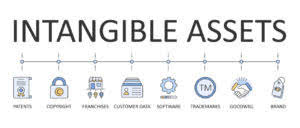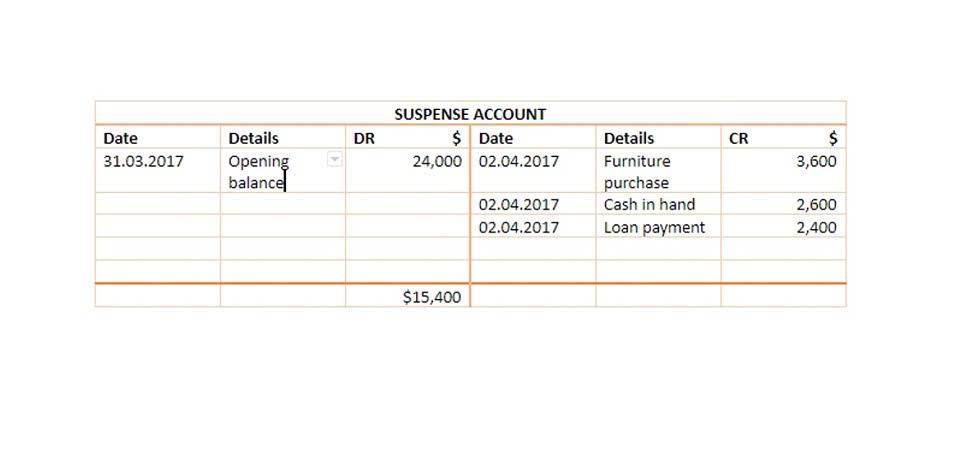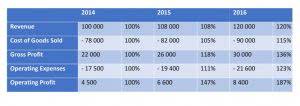Under the FIFO method, the goods that enter first have been sold from the inventory. Weighted Average Cost calculates the value of each item sold by taking the average cost of all inventory items. Accounting conservatism is the notion that all possible losses are documented when they are found, whereas profits can only be recognised when they are fully realised. Harold Averkamp (CPA, MBA) has worked as a university accounting instructor, accountant, and consultant for more than 25 years.
Similarly, if a choice of outcomes with similar probabilities of occurrence will impact the value of an asset, recognize the transaction resulting in a lower recorded asset valuation. You’re going to overstate losses and understate the recognition of profits. Conservatism is one of the generally accepted accounting principles (GAAP), which is a set of guidelines drawn up to ensure that companies report financial information in a clear and accurate way. This particular principle requires companies to exercise caution when recording financial activity, opting for solutions that show the least favorable outcome.
- This is since from the outside you’re going to overstate your losses and understate your profits.
- This is used as guidance when there’s a need for estimation in accounting, preventing inflated figures or bias.
- As a result, the payoffs lead to timelier financial reporting that can potentially impact the contracting parties.
- Revenues and expenses need to get recorded during the same accounting period.
- Similarly, a business cannot recognize a gain (for example) from a lawsuit, despite being certain of winning it, until the verdict is announced and cash is received.
The aim of this concept is to protect investors from potentially inflated revenues and assets. Accounting conservatism refers to financial reporting guidelines that require accountants to exercise a high degree of verification and utilize solutions that show the least aggressive numbers when faced with uncertainty. It is a longstanding principle in financial reporting intended to protect users of financial information from inflated revenues and to make sure that all potential liabilities are recorded as soon as they are realized.
AccountingTools
A transaction can be deferred into the next period if it does not meet the reporting requirements of the current period. When determining the reporting value for inventory, conservatism dictates the lower of historical cost or replacement cost is the monetary value. The IRS has implemented several rules to mandate the recognition of taxable income in certain circumstances, in order to accelerate the recognition of taxable income. As an accountant, use your best judgment to evaluate a situation and to record a transaction in relation to the information you have at that time. Do not use the principle to consistently record the lowest possible profits for a company. It ensures that the financial information reported gets done clearly and accurately.
They are also applicable in accounting standards, such as casualty losses and accounts receivable. Following the conservative approach, companies can only claim profit when it’s fully realized and legally verified. A company should factor in the potential worst-case scenario when making financial forecasts under these guidelines. For example, if there are two options to choose from, the accountant should choose the one with lower numbers to stay on the safe side. While uncertain liabilities would be recorded upon discovery, revenues can only be recorded upon assurance of receipt.
Related AccountingTools Courses
Here’s a closer look at how this works, along with the pros and cons of conservatism in financial accounting. It might be difficult for the investors to understand the company’s financial position. This is because conservative accounting can lead to understating a company’s assets and overestimating its liabilities. When inventory values decline, accounting conservatism suggests that a company should use the lower cost or market method to value its inventory.
What is the Conservatism Principle?
While conservatism leans towards a more prudent approach, fair value accounting leans towards a more market-based and potentially volatile approach. The choice between the two depends on the circumstances and the specific accounting standards applicable in each situation. Conservatism emphasizes early recognition of potential losses and expenses, even uncertain ones. Despite the potential drawbacks, conservatism promotes financial reporting transparency and accountability, which are required for modern financial markets to function.
Accounting conservatism is especially applicable to the recognition of revenue. There are numerous rules mandating that the recognition of revenue be deferred until all performance conditions by the seller have been completed. Similarly, a business cannot recognize a gain (for example) from a lawsuit, despite being certain of winning it, until the verdict is announced and cash is received. This level of conservatism can put off the recognition of gains for substantial periods of time. However, if the company uses accounting conservatism and applies the lower cost or market method, it would adjust the product’s value in its inventory to $15.
The principle of conservatism is an important principle in financial reporting that guides how companies should recognize and report their financial transactions and events. Most obviously, it encourages management to exercise greater care in its decisions. It also means there is more scope for positive surprises, rather than disappointing upsets, which are big drivers of share prices. Like all standardized methodologies, these rules should also make it easier for investors to compare financial results across different industries and time periods. Following this approach, you can only claim profits once they have been realized and verified. Basically, uncertain liabilities are going to get recorded once they’re discovered.
There are also disadvantages of conservatism in accounting from a tax authority perspective. Under conservatism, taxable income reporting might be lower, which results in reduced tax payments. While these are made https://www.wave-accounting.net/ up in the future as revenue is recorded, it can cause a temporary imbalance. Accounting conservatism is the concept that a business should take the most conservative view to recording business transactions.
Doing so reduces the risk that transactions entered into an accounting system will need to be adjusted at a later date. This means that expenses and liabilities are recorded as soon as possible, while revenues and assets are recorded only when there is significant assurance of their receipt. For example, the book values of assets and revenues are intentionally understated when reporting, while losses and liabilities are overstated.
Revenues and expenses need to get recorded during the same accounting period. Under GAAP accounting standards, the conservatism principle – also called the “prudence concept” – must be applied when preparing the financial statements of companies. Conservatism in Accounting helps provide a more realistic and prudent representation of a company’s financial position and performance.
Similarly, even if the outcome of the legal case is uncertain, a corporation should acknowledge any potential legal liability as soon as practicable. Upgrading to a paid membership gives you access to our extensive collection of plug-and-play Templates designed to power your performance—as well as CFI’s full course catalog and accredited Certification Programs.
The conservatism concept can lead to a “downward bias” in the values of a company’s assets and revenue. It can also reduce the potential for earnings manipulation by requiring companies to be conservative in their accounting practices. The underlying goal of this principle is to prevent the overstatement of assets and income, providing a more realistic and cautious portrayal of a company’s financial health. That said, “potential” revenue and anticipated profits cannot yet be recognized – instead, only the verifiable revenue and profits can be recorded (i.e. there is a reasonable certainty in delivery). On the other hand, conservatism accounting comes with a few potential downsides.
They were put into place to help make financial reporting more clear and accurate. With the conservatism approach, you claim profit once it has become verified and realized. It’s all going to depend, as with any GAAP there can be both benefits and disadvantages.
A management team can use accounting conservatism to its advantage by recording large loss reserves. Doing so tanks the reported results in the current period, but creates a large reserve against which management can dump any number of losses in later periods. The outcome is a services bookkeeping for landscaping business of overstated financial statements in later reporting periods. The principles of accounting conservatism provide guidance for inventory valuation. The principles require a company to use historical cost or replacement value when estimating the reporting value for inventory.
However, the company must record the economic loss if it expects to lose a lawsuit. Other information that is subject to the disclosure requirement includes contingent liabilities, such as product warranty compensation, unearned revenue, or royalty payments. Conversely, a company can also distribute funds in reserve to increase earnings and subsequently minimize investment. With accounting conservatism, current earnings are increased, making them a poor indicator of the future marginal return. The accounting rule provides guidelines for estimation in times of uncertainty and in circumstances where there is a likelihood of measurement bias from an accountant. It also arises naturally from two contracting parties and is considered an efficient concept for contracting.






